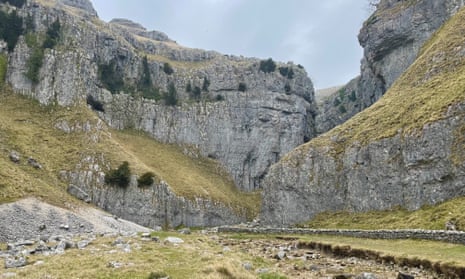There are new colours flying from the flagpole on Castleberg Crag in Settle: summer-sky blue and sunflower yellow. I see them everywhere now: hyacinths and daffodils outside the supermarket; black-faced sheep on Warrendale Knotts with blue and yellow smit marks, the combination no less powerful even where it is unintentional.
The woodland adjacent to Castleberg is a scene of devastation, wreaked by a different kind of airstrike. It’s the same all over the high dales – the winter has taken an astonishing toll on the most statuesque trees, with dieback-afflicted ash and shallow-rooted beech the worst affected. Many have been sectioned and stacked alongside roads and bridleways. Others lie where they fell, and I walk their lengths, paying respects.
There are old farmers here who have never seen such winds, I’m told. The worst came, unusually, from the north, so trees that have stood firm against prevailing gales found themselves stressed in unfamiliar ways. Post-Covid, I can relate to that. I’m grateful for the vaccines that primed my immune system, but I’m still taking time to recover. Hills are a challenge, so I pick routes carefully, contouring, following the lines of drystone walls. Some have fallen under toppled trees, but will be reassembled using only what is to hand. They make me think about resilience, and how we will find enough of that as political, meteorological and epidemiological storms keep coming.

I go to a place that I think might have some answers. They call them scars – limestone pavements, crags and clefts, places where the Earth shows its bones. Attermire Scar, Yew Cogar Scar, Loup Scar, Great Scar, and this one, Gordale. A scar looks like damage, but it means healing. The characteristic vegetation on the most challenging parts of the scars, their exposed vertical faces, is yew – slow-grown, long-lived, winter-green: offering shelter and sustenance, but also poison. They know a thing or two about resilience these old ones, but also about resistance. They show me how they hold tight with their roots to what is most sure and certain, but open their branches to all that life throws at them as it passes by. As darkness falls they whisper that poison, in the right dose, can be a cure.

Comments (…)
Sign in or create your Guardian account to join the discussion